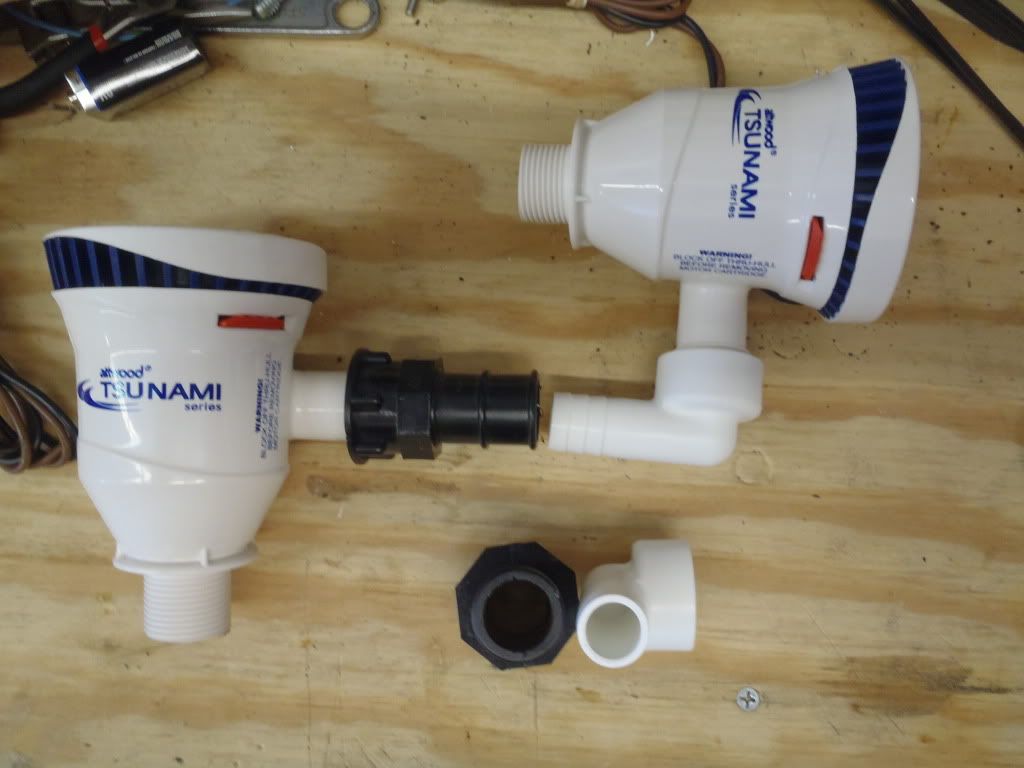So im always looking for ways to improve my ballast setups...and here's the latest.
If you remember back last year, I did some pump flow testing. In those tests, it was determined that the biggest bottle neck was at the W736 .75 male sac valve fitting. The .75 hose didnt really slow the flow rate, but its impossible to stretch it over the 1.125" fittings. So to avoid the .75" fittings and use the 1.125, you need to use 1" hose. This can prevent a not so conventional union on a pump like the Attwood T800.
The T800 pump has a .75 inlet, very common, and a .75 threaded outlet. The pump comes with a .75" female thread x .75 hose barb. This fitting also hurts the pumps flow rate same as the W736.
I know have a new fitting that is .75" female threads x 1" hose barb. This will allow the use of a value pump, like the T800, yet a solid connection with 1" hose, so you can use the larger, higher flow 1.125" sac fittings.

If you remember back last year, I did some pump flow testing. In those tests, it was determined that the biggest bottle neck was at the W736 .75 male sac valve fitting. The .75 hose didnt really slow the flow rate, but its impossible to stretch it over the 1.125" fittings. So to avoid the .75" fittings and use the 1.125, you need to use 1" hose. This can prevent a not so conventional union on a pump like the Attwood T800.
The T800 pump has a .75 inlet, very common, and a .75 threaded outlet. The pump comes with a .75" female thread x .75 hose barb. This fitting also hurts the pumps flow rate same as the W736.
I know have a new fitting that is .75" female threads x 1" hose barb. This will allow the use of a value pump, like the T800, yet a solid connection with 1" hose, so you can use the larger, higher flow 1.125" sac fittings.




Comment